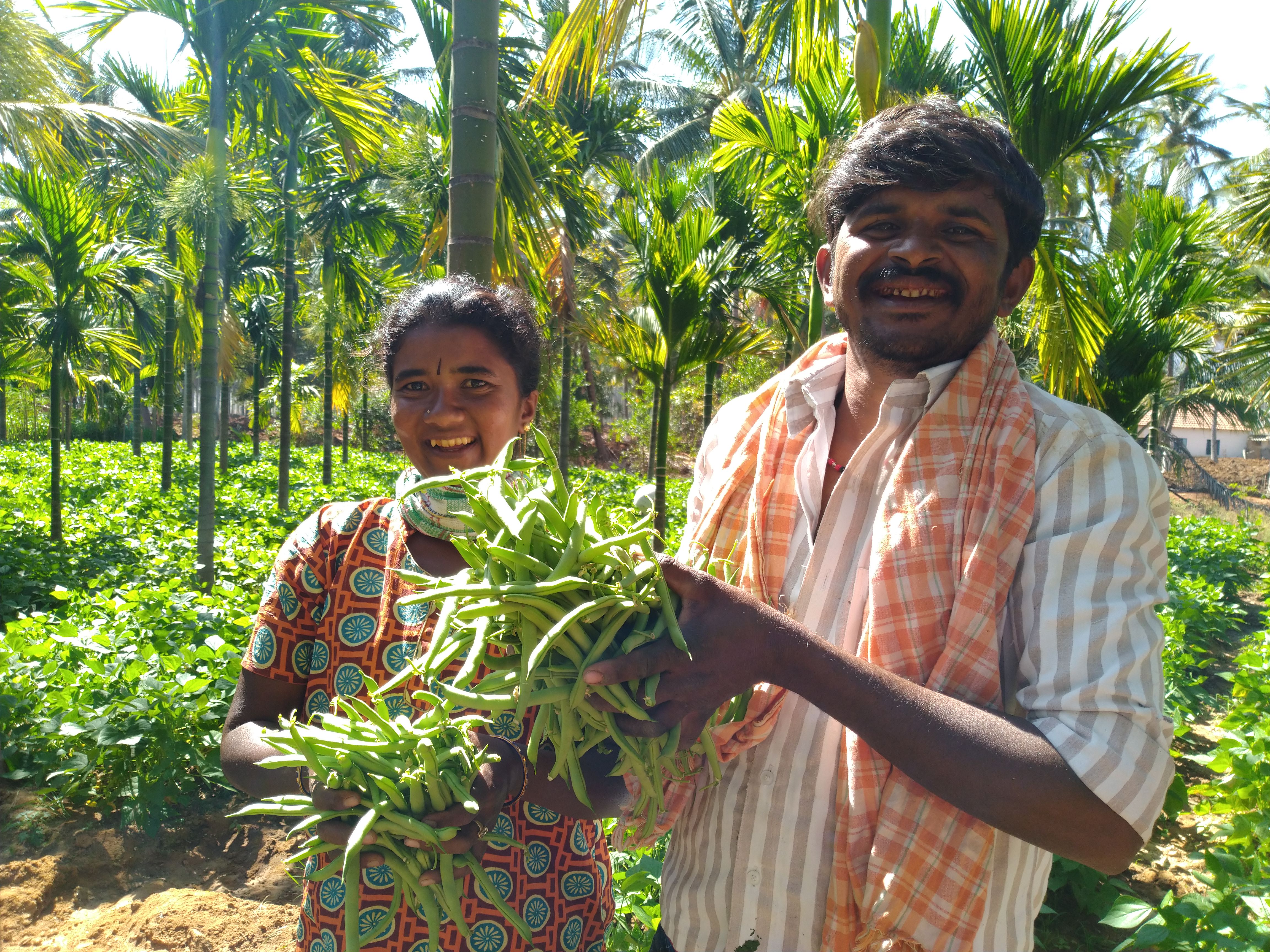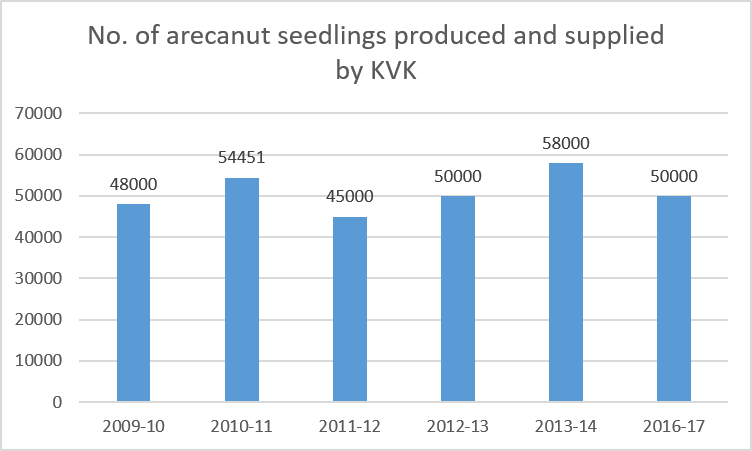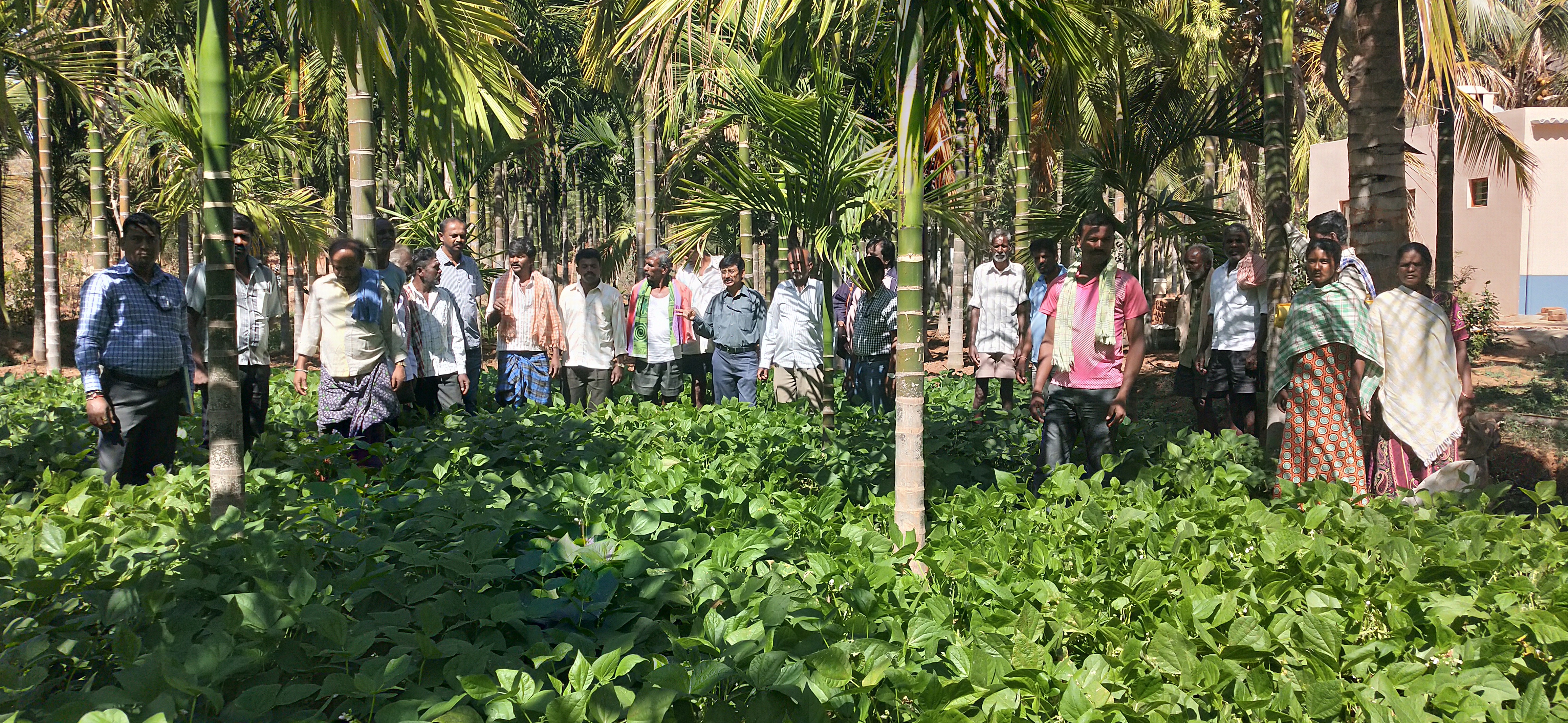
The arecanut palm is the source of common chewing nut, popularly known as betel nut or supari. In India it is extensively used and is very much linked to religious practices. India is the largest producer of arecanut and at the same time largest consumer also. Major states cultivating this crop are Karnataka (40 per cent), Kerala (25 per cent), Assam (20 per cent), Tamil Nadu, Meghalaya and West Bengal.
About 34,719 Hectares is under Arecanut in Tumakuru district in which Gubbi, Tumakuru and Sira taluks stand first, second and third, respectively. Several problems affect arecanut, among which, inflorescence dieback, button shedding and nut splitting are severely affecting yield and income. No systematic survey has been conducted to assess the crop loss caused by this disease.
Technology details:
Quality planting material of Hirehalli Tall Variety. Borax @ 30 g/tree along with recommended farm yard manure and fertilizers. Intercropping with cowpea, dolichos, French bean and Ridge gourd during Rabi. Need based use of insecticides and fungicides against common pests & diseases.

Yield and output details:
Area under quality planting material adopted in an area of 450 ha with Hirehalli tall variety. Nut splitting reduced to 3.4 per cent compared to 12 per cent in check plots. The yield obtained in demo plot was 9.54 q/ha, an increase of 12.5 per cent over farmers practice (8.48 q/ha).
| Particulars | No of nuts /bunch | % splitting incidence | Yield ( Qtl/ha) | % Increase | Gross Cost (Rs/ha) | Gross Return (Rs/ha) | Net Income ( Rs/ha) | % increase in net income |
| Nutrient management demonstration | 350.2 | 3.4 | 9.54 | 12.5 | 38,512 | 1,88,740 | 1,50,228 | 12.6 |
| Check | 294.2 | 12.0 | 8.48 | 37,693 | 1,71,164 | 1,33,471 |
Crop management technologies adopted in 8000 ha by 2600 farmers. Additional income of Rs. 50,000 in case of French bean and Rs.35,000 in case of cow pea as an intercrop was obtained by practicing farmers. Soil health also enhanced with the increase in organic carbon in the soil. Foot rot disease reduced to 12 per cent from 28 per cent. Before implementation, farmers were getting Rs.1,60,000 /ha. After KVK intervention, farmers realized Rs.2, 25,000/ha, an additional income of Rs. 65,000/ha.
| Particulars | Footrot disease % | Gross Cost (Rs/ha) | Gross Return (Rs/ha) | Net Income ( Rs/ha) | % increase in net income |
| Arecanut + intercrops (French bean) | 12 | 74,000 | 2,99,000 | 2,25,000 | 40.6 |
| Check | 28 | 62,000 | 2,22,000 | 1,60,000 |
Conclusion: Doubling Farmers Income is possible only through proper planning and adoption of advanced Package of Practices in which new technologies like high yielding and disease resistant varieties, marketability and post-harvest technological support are provided.
